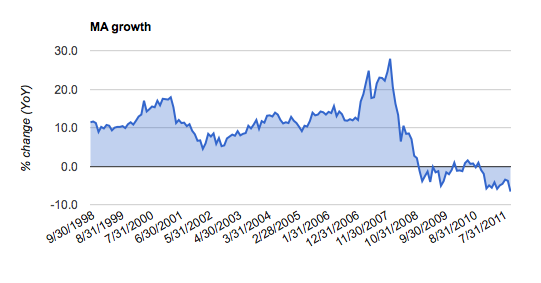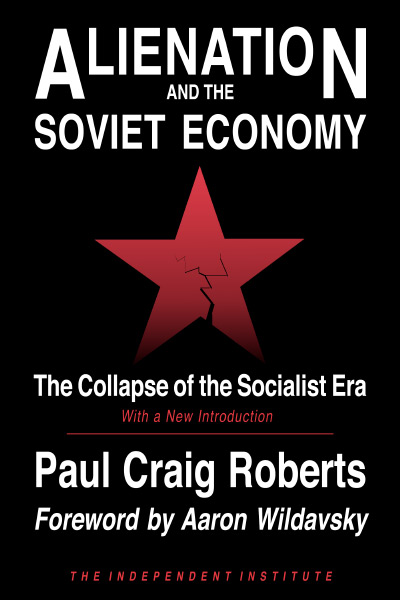“Another day, another central bank failure. In a world of currencies backed only by confidence, every failure is masqueraded as success. Like the ballet dancer who transforms the stumble into a pirouette, central bankers, knocked to the ground by market forces, smile and pretend that this was all part of the routine. Financial market participants, having bet everything on the promised omnipotence of central bankers, do indeed seem happy to see genius in every stumble. However a fall is a fall regardless of the style of the descent. So when will investors see that the earth is rapidly approaching and that style is just style?
“..Taking interest rates so negative that they threaten a run on bank deposits should not be seen as success — it is failure. Creating bank reserves at that pace should not be seen as success — it is failure. The next failure may well be some government-inspired restriction on capital inflows. Well, you could call such restrictions, and risking the liquidity of banks, monetary success if you like, but then you probably also think it’s a success to throw the ball one yard from the touchline.”
– Russell Napier, ‘The Solid Ground’, 5th February 2015.
“..The position of the people who had at least nominal responsibility for what was going on was a complex one. One of the oldest puzzles of politics is who is to regulate the regulators. But an equally baffling problem, which has never received the attention it deserves, is who is to make wise those who are required to have wisdom.
“Some of those in positions of authority wanted the boom to continue. They were making money out of it, and they may have had an intimation of the personal disaster which awaited them when the boom came to an end. But there were also some who saw, however dimly, that a wild speculation was in progress and that something should be done. For these people, however, every proposal to act raised the same intractable problem. The consequences of successful action seemed almost as terrible as the consequences of inaction, and they could be more horrible for those who took the action.
“A bubble can easily be punctured. But to incise it with a needle so that it subsides gradually is a task of no small delicacy. Among those who sensed what was happening in early 1929, there was some hope but no confidence that the boom could be made to subside. The real choice was between an immediate and deliberately engineered collapse and a more serious disaster later on. Someone would certainly be blamed for the ultimate collapse when it came. There was no question whatever as to who would be blamed should the boom be deliberately deflated. (For nearly a decade the Federal Reserve authorities had been denying their responsibility for the deflation of 1920-1.) The eventual disaster also had the inestimable advantage of allowing a few more days, weeks, or months of life. One may doubt if at any time in early 1929 the problem was ever framed in terms of quite such stark alternatives. But however disguised or evaded, these were the choices which haunted every serious conference on what to do about the market.”
– J.K. Galbraith, ‘The Great Crash 1929’.
“It’s a mess, ain’t it, Sheriff ?”
“If it ain’t, it’ll do ‘til the mess gets here.”
– Dialogue from ‘No country for old men’, by the Coen Brothers and Cormac McCarthy.
There are some time-honoured signs of an impending market top. One of them is thatmargin debt has peaked. Another is that interest rates are going through the floor. Another is that market breadth is contracting. Another is that the velocity of money is also going through the floor. Another is that Abby Joseph Cohen reckons the stock market is relatively cheap, an opinion which she generously gave at a recent Barrons roundtable. Barrons actually gave us two signs of a market top for the price of one (but then everything’s devalued these days) – their February 6th edition pointed out that the value of fine art sold at auction had quadrupled from $3.9 billion in 2004 to some $16.2 billion in 2014. They tastefully offered readers a choice between the conclusions of malign ‘bubble’ and benign ‘boom’.
The problem is that in an environment of ubiquitous government manipulation, markets can trade at whatever levels central bankers want them to trade at, for a period at least. So we’re not going to be rash enough to call a market top; we’ll merely draw attention to some anecdotal evidence of a certain, how shall we put it, irrational exuberance at work in the US stock market.
We tip our hat to Beijing Perspective and the Wall Street Journal for the recent news that Carmine “Tom” Biscardi is on the hunt for Bigfoot, and is planning an IPO to fund the expedition:
“Mr. Biscardi and his partners hope to raise as much as $3 million by selling stock in Bigfoot Project Investments. They plan to spend the money making movies and selling DVDs, but are also budgeting $113,805 a year for expeditions to find the beast. Among the company’s goals, according to its filings with the Securities and Exchange Commission: “capture the creature known as Bigfoot.”
“Investment advisers caution that this IPO may not be for everyone. For starters, it involves DVDs, a dying technology, said Kathy Boyle, president at Chapin Hill Advisors. Then there is the Sasquatch issue. She reckons only true believers would be interested in such a speculative venture.”
This is a wonderful instance of life imitating art. Note the similarities between the Bigfoot story (which we have to presume is true) and The Onion’s market scoop from November 1999 (the date is instructive), namely
Species of blue-green algae announces IPO
“LAKE ERIE—Seeking to capitalize on the recent IPO rage on Wall Street, Lake Erie-based blue-green algae Anabaena announced Tuesday that it will go public next week with its first-ever stock offering.
“Anabaena, a photosynthesizing, nitrogen-fixing algae with 1999 revenues estimated at $0 billion, will offer 200 million shares on the NASDAQ exchange next Wednesday under the stock symbol ALG. The shares are expected to open in the $47-$49 range.”
It gets better. With eerie genius:
“..Still, many investors said they are unsure whether they would be willing to take even a moderate risk on the stock.
“One thing they’re not saying in the prospectus—and I’ve been through it thoroughly—is that blue-green algae aren’t really algae. They’re cyanobacteria,” said Jeanette MacAlester, a San Francisco-based stockbroker who is strongly advising her clients not to buy ALG. “I don’t know if I’d put my money in any bacteria, let alone one that seems to think it has something to hide.”
Markets are allowed their petty indiscretions, of course. But these petty indiscretions seem to be piling up. Barry Ritholtz and Bloomberg last week drew attention to the fact that shares of The Grilled Cheese Truck Inc. had commenced trading on the OTCQX marketplace under the ticker GRLD:
“Let’s look at the fundamentals of the Ft. Lauderdale, Florida-based company. Based on the 18 million shares outstanding and a recent stock price of $6 the company has a market value of about $108 million. No matter how much you like grilled cheese.. I can’t see this as a reasonable valuation.
“If you go to the company’s website, you will learn that “The company currently operates and licenses grilled cheese food trucks in the Los Angeles, CA area and Phoenix, AZ and is expanding into additional markets with the goal of becoming the largest operator in thegourmet grilled cheese space.” You can see an interview with the founder here. The company employs military veterans, and it even lists retired General Wesley Clark as vice chairman.
“However, according to the company’s financial statements, it has about $1 million of assets and almost $3 million in liabilities. In the third quarter of 2014, it had sales of almost $1 million, on which it had a net loss of more than $900,000. The story is much the same for the first nine months of the year: $2.6 million in sales and a loss of $4.4 million.
“But forget the losses for a moment, and make the generous assumption that it will have sales of $4 million this year. This means its shares trade for more than 25 times sales, a very rich valuation.
“Which brings me back to my original comments regarding looking for contrary indicators to my bullish posture. I can’t think of a more interesting sign of the old irrational exuberance in equity markets than a publicly traded grilled cheese truck (four in this case) business trading at a $100-million-plus valuation. That sort of thing doesn’t happen unless there is significant excess in the markets.”
Any reference to a company seeking to dominate the “gourmet grilled cheese space” is desperately seeking a twin reference to a post we recall from the dotcom deadpool website F******Company.com from circa late 1999:
“Our business strategy is to lose money on every sale but make up for it in volume.”
Enjoy the party, but dance near the door.




Strictly speaking this madness is not the fault of the ‘market’. The market madness is contagion from the madness of the mad bad central banks, reg-yew-lay-tors and inept and self-interested politicians forever bailing themselves out with our money or when that falls short making lots more money.
The market is a complex adaptive system. But it is comprised of individual humans making choices. ‘Fault’ is not necessarily the right word for us to use. But it seems clear to me that there are lots of individuals making very poor choices – in large part fuelled by central bank action, as you say – and at some point, perhaps quite soon, lots of people may get very badly hurt as a result.
This article reminded me of Charles Mackay’s book ‘Extraordinary popular delusions and the madness of crowds’. It’s always good to get some historical perspective on present day madness.
Here’s an example of a south sea bubble era IPO prospectus
“For carrying on an undertaking of great advantage; but nobody to know what it is” (at least nowadays we get some made up numbers, the business idea reminds me of some hedge funds)
And my favourite . . .
“the headlong fool who wants to be a swopper
Of gold and silver coin for English copper,
May, in Change Alley, prove himself an ass,
And give rich metal for adulterate brass.”